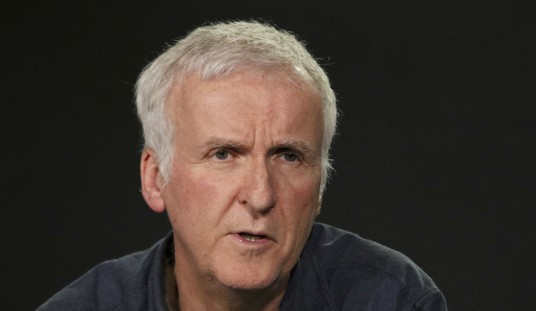I like this simple, elegant explanation from Reason’s Ronald Bailey about the value of labor and the minimum wage:
If all other factors remain equal, the higher the price of a good, the less people will demand it. That’s the law of demand, a fundamental idea in economics. And yet there is no shortage of politicians, pundits, policy wonks, and members of the public who insist that raising the price of labor will not have the effect of lessening the demand for workers. In his 2014 State of the Union Address, for example, President Barack Obama called on Congress to raise the national minimum wage from $7.25 to $10.10 an hour. He argued that increasing the minimum wage would “grow the economy for everyone” by giving “businesses customers with more spending money.”
A January 2015 working paper by two economists, Robert Pollin and Jeanette Wicks-Lim at the Political Economy Research Institute at the University of Massachusetts Amherst, claims that raising the minimum wage of fast food workers to $15 per hour over a four-year transition period would not necessarily result in “shedding jobs.” The two acknowledge that the “raising the price of anything will reduce demand for that thing, all else equal.” But they believe they’ve found a way to “relax” the all-else-being-equal part, at least as far as the wages of fast food workers go. Pollin and Wicks-Lim argue that “the fast-food industry could fully absorb these wage bill increases through a combination of turnover reductions; trend increases in sales growth; and modest annual price increases over the four-year period.” They further claim that a $15/hour minimum wage would not result in lower profits or the reallocation of funds away from other operations, such as marketing. Amazing.
Seattle is going to put that theory to a real world test. Starting April 1, businesses in the city will be forced to raise the minimum wage to $11 an hour, reaching $15 an hour by 2017 for large businesses and 2019 for smaller companies. There are allowances if a business offers health insurance benefits, but all businesses will be paying employees $15 an hour in salary, tips, or benefits by 2021.
This has caused great consternation among Seattle area eateries – not just fast food places.
Seattle’s $15 minimum wage law goes into effect on April 1, 2015. As that date approaches, restaurants across the city are making the financial decision to close shop. The Washington Policy Center writes that “closings have occurred across the city, from Grub in the upscale Queen Anne Hill neighborhood, to Little Uncle in gritty Pioneer Square, to the Boat Street Cafe on Western Avenue near the waterfront.”
Of course, restaurants close for a variety of reasons. But, according to Seattle Magazine, the “impending minimum wage hike to $15 per hour” is playing a “major factor.” That’s not surprising, considering “about 36% of restaurant earnings go to paying labor costs.” Seattle Magazine,
“Washington Restaurant Association’s Anthony Anton puts it this way: “It’s not a political problem; it’s a math problem.”
“He estimates that a common budget breakdown among sustaining Seattle restaurants so far has been the following: 36 percent of funds are devoted to labor, 30 percent to food costs and 30 percent go to everything else (all other operational costs). The remaining 4 percent has been the profit margin, and as a result, in a $700,000 restaurant, he estimates that the average restauranteur in Seattle has been making $28,000 a year.
“With the minimum wage spike, however, he says that if restaurant owners made no changes, the labor cost in quick service restaurants would rise to 42 percent and in full service restaurants to 47 percent.”
Restaurant owners, expecting to operate on thinner margins, have tried to adapt in several ways including “higher menu prices, cheaper, lower-quality ingredients, reduced opening times, and cutting work hours and firing workers,” according to The Seattle Times and Seattle Eater magazine. As the Washington Policy Center points out, when these strategies are not enough, businesses close, “workers lose their jobs and the neighborhood loses a prized amenity.”
A spokesman for the Washington Restaurant Association told the Washington Policy Center, “Every [restaurant] operator I’m talking to is in panic mode, trying to figure out what the new world will look like… Seattle is the first city in this thing and everyone’s watching, asking how is this going to change?”
By decoupling the value of labor from the real world of supply and demand, the consequences are a reduction in the overall value of labor and the forced increase in prices that will lessen demand. If your electric, gas, water, phone, and other overhead costs go up 35%, you are going to be forced to raise prices on your products, and reduce your workforce numerically as well as the number of hours worked per employee. Why would an increase of that magnitude in labor costs not result in the same outcome?
Bailey chalks up this nonsense to economic ignorance. Hard to disagree with that. Relying on crackpot theories to push this ruinous policy will soon be shown to be a monumental mistake. Not only will restaurants and other small businesses be forced to close. But there will be few entrepreneurs willing to take a chance and open a business in the city.
That means a net loss in jobs and economic activity. But for the rich voters in King County, that hardly matters. It’s so “progressive” to pay someone a wage unrelated to the value of their work. Too bad those who can least afford to be a casualty of this progressive experiment will suffer the most.










Join the conversation as a VIP Member